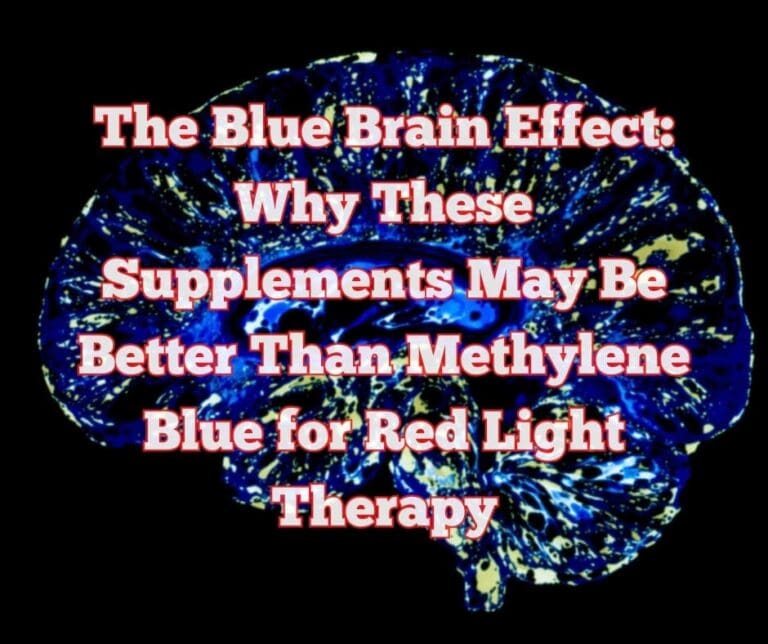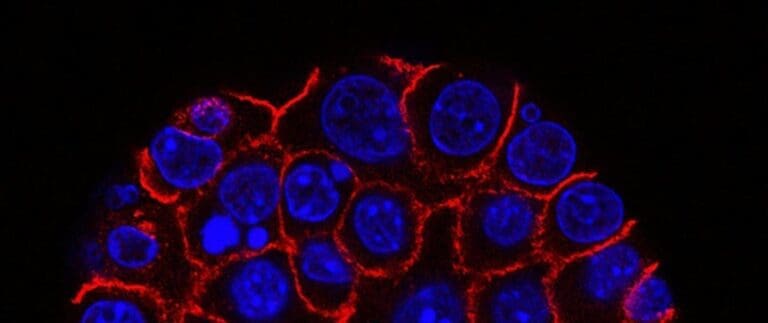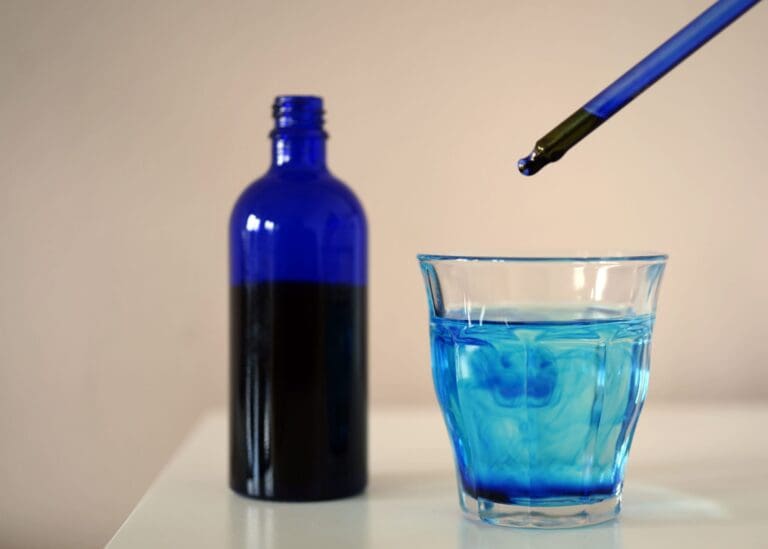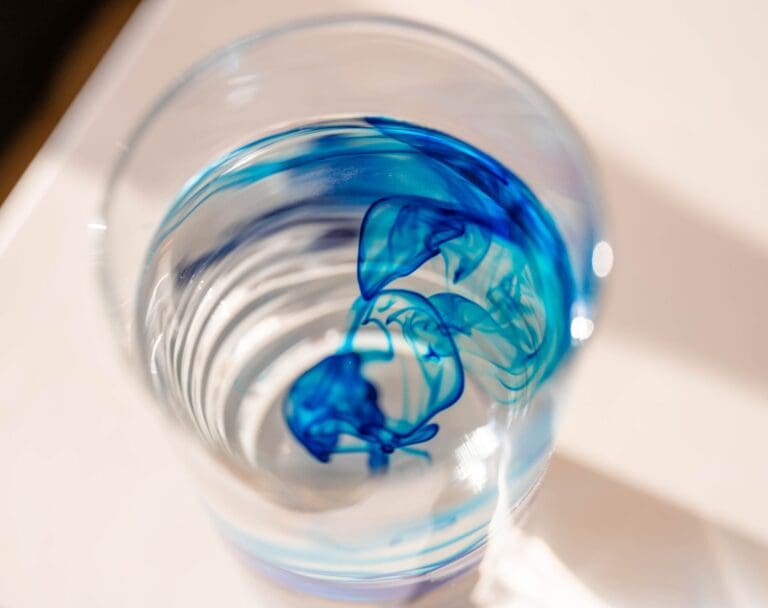A powerful partner Red Light Therapy
Methylene Blue (MB) is an intriguing substance with a storied history and an expanding role in modern science, especially in the realm of cognitive enhancement. Originally synthesized in the late 19th century, this compound has journeyed from its initial use as a dye to becoming a potential nootropic, promising to clear the mental cobwebs of brain fog. In this article, we delve into the historical background of MB, explore its efficacy as a nootropic, and examine the risks associated with its use.

The Historical Journey of Methylene Blue
Methylene Blue was first synthesized in 1876 by Heinrich Caro, a German chemist working for BASF. Initially, it was used as a dye for textiles. However, its medical potential was soon recognized, and it began to be used as a treatment for malaria in the early 20th century. The ability of MB to stain certain biological tissues made it a useful diagnostic tool, especially in the fields of bacteriology and histology.
During World War II, MB was widely used by the military to treat malaria. Its role expanded over the years to include treatment for methemoglobinemia, a condition where hemoglobin is unable to release oxygen effectively to body tissues. More recently, its pharmacological properties have been explored in various domains, including neurodegenerative diseases, as it has shown promise in Alzheimer\’s and Parkinson\’s research.
Efficacy of Methylene Blue as a Nootropic
The interest in Methylene Blue as a nootropic—an agent that enhances cognitive function—has grown in recent years. Research indicates that MB may have several mechanisms of action that contribute to its cognitive benefits:
Methylene Blue and Brain Fog
- Mitochondrial Support: MB acts as an electron donor in the mitochondrial electron transport chain, which enhances cellular respiration and ATP production. This boost in cellular energy is believed to enhance cognitive functions and reduce symptoms of brain fog.
- Neuroprotection: MB has antioxidant properties that protect neurons from oxidative stress, a key factor in cognitive decline and neurodegenerative diseases.
- Memory Enhancement: Studies have shown that MB can improve memory consolidation and retrieval. It has been suggested that MB enhances synaptic plasticity, which is crucial for learning and memory.
- Mood Stabilization: There is evidence that MB has antidepressant effects, possibly due to its influence on the monoaminergic systems (serotonin, dopamine, and norepinephrine) in the brain.
Clinical studies have demonstrated improvements in cognitive performance, working memory, and attention in individuals taking low doses of MB. These findings have sparked interest in its potential as a treatment for cognitive impairment and as a general cognitive enhancer for healthy individuals.
Risks and Considerations in Using Methylene Blue
Despite its potential benefits, the use of Methylene Blue as a nootropic is not without risks. Here are some considerations and potential side effects:
- Dosage: The therapeutic window for MB is narrow. While low doses can be beneficial, higher doses can lead to toxicity. It is crucial to adhere to recommended dosages to avoid adverse effects.
- Serotonin Syndrome: MB can inhibit monoamine oxidase A (MAO-A), an enzyme that breaks down serotonin. When taken in combination with other serotonergic drugs (such as SSRIs), there is a risk of serotonin syndrome, a potentially life-threatening condition.
- Methemoglobinemia: While MB is used to treat methemoglobinemia, paradoxically, inappropriate use can also induce this condition if not monitored properly.
- Urine Discoloration: A benign but notable side effect of MB is the discoloration of urine, turning it a blue or greenish color, which can be alarming but is harmless.
- Potential Drug Interactions: MB can interact with a variety of medications, including antidepressants, anxiolytics, and certain antibiotics. It is essential to consult a healthcare provider before starting MB, especially for individuals on other medications.
Conclusion
Methylene Blue’s journey from a textile dye to a potential cognitive enhancer is a testament to the compound’s multifaceted nature. Its promise as a nootropic is supported by its ability to enhance mitochondrial function, protect neurons, improve memory, and stabilize mood. However, its use must be approached with caution due to the risks of toxicity, serotonin syndrome, and drug interactions. As research continues to uncover the full extent of MB’s effects on the brain, it remains a compelling candidate in the quest to blast away brain fog and enhance cognitive clarity.
Sources:
- History of Methylene Blue:
- Atamna H, Kumar R. \”Methylene blue: a promising antioxidant strategy for Alzheimer\’s disease and other neurodegenerative disorders.\” Biochemical Society Transactions. 2010. PubMed Link
- Naylor GJ. \”A preliminary trial of methylene blue in manic-depressive psychosis.\” The British Journal of Psychiatry. 1986. PubMed Link
- Nootropic Benefits & Cognitive Enhancement:
- Rojas JC, Bruchey AK, Gonzalez-Lima F. \”Neurometabolic mechanisms for memory enhancement and neuroprotection of methylene blue.\” Progress in Neurobiology. 2012. PubMed Link
- Gonzalez-Lima F, Barksdale BR, Rojas JC. \”Mitochondrial respiration as a target for neuroprotection and cognitive enhancement.\” Biochemical Pharmacology. 2014. PubMed Link
- Potential Risks and Side Effects:
- Ramsay RR, Dunford C, Gillman PK. \”Methylene blue and serotonin toxicity: inhibition of monoamine oxidase A (MAO A) confirms a theoretical prediction.\” British Journal of Pharmacology. 2007. PubMed Link
- FDA Warning: Methylene Blue and Serotonergic Drugs. FDA Link





